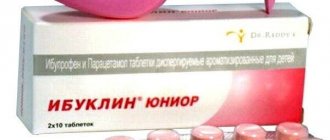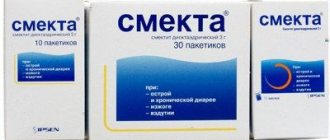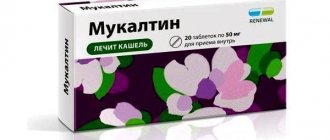What is Smecta?
White powder in individual white and blue sachets remains a permanent resident of many home medicine cabinets. The drug often acts as a modern replacement for activated carbon.
The drug belongs to the category of sorbents. This means that upon entering the body, the substance absorbs and removes toxic pathogenic substances. The area of action of drugs like Smecta is the gastrointestinal tract.
The active ingredient in the powder is of natural origin and is called diosmectite. In a chemical pharmacological sense, the drug is a mixed silicate (or, according to some sources, oxide) of magnesium and aluminum. In fact, the medicine is obtained by using complex chemical and technological processing of specific clay and shell rock.
As a result of production, a white powder is obtained, to which sweeteners and vanilla or orange flavors are added as auxiliary components.
Composition, How smecta helps against nausea
Smecta is a light gray powder. The composition of this drug includes crushed shells and a special type of clay, which is mined on the Mediterranean coast. It is these components that perform a cleansing function in the body.
When it enters the stomach and intestines, harmful substances are absorbed, including bacteria and toxins. In addition to the cleansing effect, the medicine creates a protective film on the mucous membrane of the intestines and stomach, which protects the organs from irritation caused by the disease.
In addition, the medicine “knits”, that is, it saves from diarrhea, which often occurs along with vomiting in case of poisoning.
By the way, Smecta inside is not visible on x-rays, and also does not affect the color of stool at all.
In addition to organic clay, the drug contains flavoring and sweetener. This composition makes the medicine pleasant primarily for children; give them a new taste every time. Each parent can purchase an orange or vanilla version of the drug, depending on the baby’s preferences.
When is the drug prescribed?
First of all, Smecta fights diarrhea of any origin. Reasons that cause discomfort that the drug can relieve include:
- infections and viruses of the gastrointestinal tract;
- poisoning;
- indigestion;
- allergic reaction;
- climate adaptation.
In addition to diarrhea, Smecta is an excellent remedy for eliminating the symptoms of heartburn, bloating, and flatulence. In addition to the above, the sorbent alleviates the condition of nausea and vomiting, and is used in combination with drugs whose action is aimed at restoring the water-salt balance (for example, Regidron).
It is worth noting that vomiting in children is not always caused by reasons that require drug therapy with diosmectin. Taking the suspension is useless in cases where the child:
- overeat;
- swallowed air while eating and regurgitated (relevant for infants);
- hyperactive directly during or immediately after eating;
- vomiting is caused by a foreign object entering the throat and causing a reflex.
In addition, the sorbent is not prescribed for diseases that do not have an etymology associated with gastrointestinal problems. Vomiting is one of the body’s frequent defense reactions, so the causes may lie in different areas of medicine. We are talking about neurological indications, concussion, appendicitis, diabetes mellitus, thyroid diseases and others.
In this regard, we can come to the conclusion that if vomiting occurs, especially in children, you should not engage in self-diagnosis and self-medication. For a correct diagnosis and treatment tactics, you should consult your doctor.
Instructions for use
The procedure for using the sorbent depends on the age of the child:
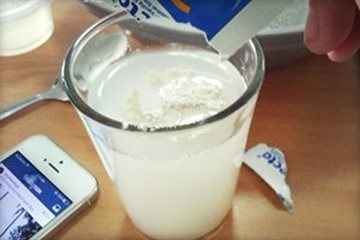
- up to 12 months . One sachet of Smecta is dissolved in 1/2 cup of boiled water, divided into several doses and given to the child throughout the day (at least 4 hours must pass between adjacent doses). If the baby refuses to drink the solution, the powder can be prepared with juice, tea or semi-liquid food (mashed potatoes, porridge, soup);
- from 1 to 2 years . The daily dose of the drug for children of this age is 1-2 sachets. The solution is prepared immediately before use. The contents of each sachet are dissolved in 1/2 glass of water;
- over 2 years old . After reaching this age, the daily dose can be increased to 2-3 servings.
It is recommended to take Smecta between meals (with the exception of esophagitis, in which the sorbent is used during meals). The recommended duration of therapy is 3-7 days.
Usually, health returns to normal within 1 day after the start of therapy. If there is no improvement within several days, you need to inform your pediatrician. The doctor will determine the reason for the ineffectiveness of the drug and create another treatment regimen.
It should be remembered that the drug absorbs all the excess that is in the stomach and may interfere with the absorption of another medicine. Therefore, sorbents are used 1-2 hours before or after taking medications.
How the drug works
The walls of the stomach and intestines are covered with a protective mucous membrane, which is damaged and thinned when toxins, viruses and infections enter the patient’s body. The natural sorbent, which is the main active ingredient of Smecta, comes into contact with the glycoproteins of the mucous membrane, strengthening it.
Thus, Smecta has enveloping and protective effects. In this case, toxins are not absorbed, but are eliminated from the body naturally, while beneficial substances and trace elements remain intact. Unlike antibiotics that disrupt the gastrointestinal microflora, the effect of Smecta is mild and harmless.
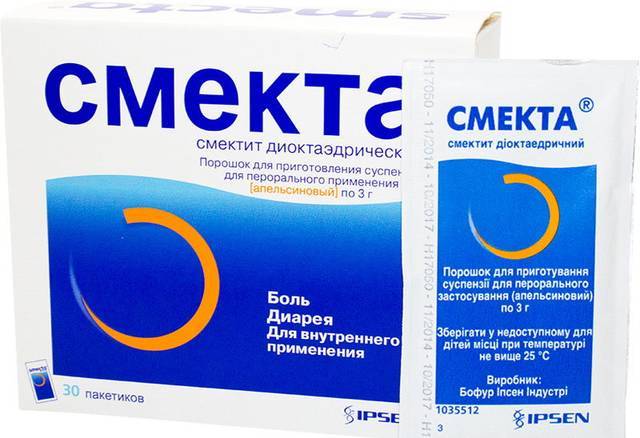
A special feature of the drug is its narrow area of action. The suspension substances do not penetrate into the blood, but “work” only in the gastrointestinal tract. In this regard, there is no additional stress on the body.
Thanks to the described mechanism of action, the drug quickly alleviates the patient’s condition, neutralizing negative symptoms.
We recommend: When colic begins and goes away in a newborn
General information about the drug
The main advantage of Smecta is the complete absence of any effect on the functioning of the digestive tract. The drug itself is excreted from the body unchanged (along with feces). That is, even if you take it in the absence of any signs of poisoning or gastrointestinal upset, nothing bad will come of it.
At the same time, Smecta acts on glycoprotein mediators responsible for the production of mucus. And at the same time, the main component of the drug forms polyvalent compounds with toxins, thus removing them from the gastrointestinal tract and preventing their absorption through the walls of the stomach or intestines. That is, the drug is effective directly against poisoning, including infectious etiology . But it can also be used to treat chronic diarrhea.
Is it possible to give Smecta to a small child when vomiting? You can take the drug at any age, from birth, since the drug has no effect on the biochemical composition of the blood. With its help, you can normalize the intestinal microflora and reduce the concentration of toxins in the digestive tract.
Smecta can also be taken for chronic diarrhea caused by a violation of the diet or the quality of the products used . The manufacturer also indicates that the effectiveness of the product has also been confirmed in case of drug poisoning (for example, a reaction in children to an antibiotic, accompanied by a sharp increase in the level of acetone and accompanying vomiting).
Dosage regimen and preparation of the drug
The drug is available in powder form for the preparation of a suspension, or in ready-to-use form. The powder must be diluted in 50 ml of warm boiled water, stir well. For babies, it is permissible to add the drug to compotes, juices, baby purees, and breast milk to make it easier to take.
Due to the pleasant taste and smell of orange or vanilla, taking the medicine often does not cause a negative reaction in the child.
It should be noted that due to the enveloping and protective properties of the suspension, simultaneous use of other drugs will be ineffective, since the absorption of active substances will be significantly reduced.
Between doses it is necessary to take breaks of an hour and a half.
The finished portion of the drug can be divided into several times. You should not force your child to take the medicine; it is more effective to take Smecta frequently and in small portions.
The prepared suspension can be stored for no more than a day. Then it is recommended to dilute a new bag of powder.
The duration of treatment usually lasts from 3 to 7 days. It is not recommended to exceed a weekly period, since prolonged use of the drug can cause constipation and intestinal obstruction.
The dosage is calculated based on the child’s condition and age. The best option is to prescribe the required dose by your attending physician.
The instructions for the drug indicate standard intake rates for children:
Babies under one year old can take a maximum of one sachet of medicine per day.
Children under two years old - no more than 2 sachets per day.
Over the age of two years, it is acceptable to take 2-3 sachets per day.
What diseases is Smecta used to treat?
The main indications for use of the drug are food poisoning and toxic infections . These pathologies are manifested by acute intoxication, which begins due to the penetration of pathogenic bacteria into the digestive system. When a child has diarrhea, microorganisms actively multiply in the intestinal cavity, producing toxins.
Taking the medicine allows you to adsorb the formed poisons and remove them from the body. Thanks to this effect, the baby’s condition quickly improves. Therefore, the drug is included in complex therapy for food poisoning and intestinal infections.
Other indications for the use of the medication are:
- diarrhea of various origins, incl. caused by allergic processes or medicinal effects;
- bloating and discomfort in the abdomen;
- intestinal colic;
- inflammatory processes in the digestive system: gastritis, colitis, esophagitis, gastroduodenitis.
The versatility of its effects makes it possible to effectively use the drug Smecta for diarrhea in most gastrointestinal diseases.
When is Smecta useless?
If you have prolonged and severe constipation, you should not give Smecta. The drug slows down the passage of contents from the digestive system. Therefore, against the background of intestinal obstruction, the activity of the drug will aggravate the course of the disease.
In addition, it is not recommended to use Smecta for osmotic diarrhea, since this form of the disease has a completely different mechanism of development (the absorption process inside the large intestine is impaired).
Use of Smecta in children
Unlike adults, children are allowed to take the drug with meals. If the child agrees to drink the suspension between meals, then this scheme is more effective.
The absence of contraindications related to the age of the young patient has been proven by clinical studies. However, parents should carefully monitor the baby’s condition, since the sorbent can cause intestinal obstruction. In cases of constipation or minimal problems with stool, the medication should be stopped.
Allergic reactions to the drug occur very rarely, however, if itching or rash occurs, Smecta is discontinued.
In case of relief and disappearance of symptoms, the use of the sorbent is also stopped.
Contraindications
- The list of contraindications is quite short:
- Individual intolerance to components;
- Intestinal obstruction and chronic constipation;
- Fructose intolerance (since saccharin sweeteners are used as excipients).
Smecta undoubtedly belongs to the necessary and effective drugs, approved and harmless for use in young children. The suspension quickly and effectively eliminates the symptoms of poisoning and intestinal infections. However, in any case of a child’s illness, parents first need to consult a doctor.
Contraindications and possible side effects
Sorbents (including Smecta) are well tolerated, so they have few contraindications.
The drug should not be taken if:
- individual intolerance;
- sucrase-isomaltase deficiency;
- intestinal obstruction;
- fructose intolerance;
- glucose-galactose malabsorption syndrome.
To find out if your child has contraindications to taking the medicine, you should consult a doctor. Side effects during therapy occur rarely.
They are usually observed when the recommended dosages are exceeded or the sorbent is taken despite existing contraindications. Possible adverse reactions include constipation and allergies (rash, urticaria, itching, angioedema). Digestive disturbances are mild and disappear after dose adjustment.
How to take: dosage, instructions
Smecta, as mentioned earlier, is a powder, which, according to the instructions for use, should be diluted with water.
This is done simply:
- The contents of the bag, which is disposable and represents one serving weighing 3 grams, is filled with water. Half a glass of liquid is enough for this;
- Do not rush to pour the powder into the water, do it slowly so that it dissolves faster and does not form lumps;
- Stir thoroughly.
The dosage depends on the severity of the disease and the age of the patient.
Doctors recommend taking smecta in the following dosage when vomiting:
- For children under two years old, one sachet is enough;
- Adults are diluted with two servings per day.
Can this drug be taken by newborn babies? Doctors do not recommend giving Smecta to a child under three months old, but in exceptional cases the medicine is still used.
The powder is diluted not only with water. It can be given to a child along with infant formula, warm tea, compote, and even added to porridge. This use makes the drug almost invisible, or the sweet taste and fruity aroma attract children even more.
It is recommended to consume the resulting liquid immediately, but no later than three hours later. This rule applies especially strictly to children. Therefore, you should not dilute one sachet of medicine right away; it is better to divide the portion of the powder into four to six doses.
Adjust the dosage time so that the medicine is taken between meals and not taken after meals. This rule does not apply to small children. The course of treatment ranges from three to seven days. Here, too, everything depends on the diagnosis and age. If there is no improvement after a few days, you should seek help from a doctor.

If vomiting is very severe, before starting treatment, doctors recommend flushing the stomach to get rid of as much bacteria and toxins as possible. This is done using ordinary boiled water in large quantities.
To do this, you just need to drink it and wait for the urge to vomit. You can also provoke nausea by putting two fingers in your mouth and pressing them on the root of your tongue.
It is also very important to replenish the body’s water-salt balance after treatment. For this purpose, Regidron is given to the patient.
Dehydration is a serious consequence of poisoning, including vomiting, so taking action in the form of fluid restoration is necessary in a short time.
Smecta for vomiting in a child. application features
A baby’s illness invariably causes panic and worry in adults. Vomiting is often an unpleasant and sudden symptom. You need to know the possible causes of the disease and how to quickly and effectively help your baby.
What is Smecta?
White powder in individual white and blue sachets remains a permanent resident of many home medicine cabinets. The drug often acts as a modern replacement for activated carbon.
The drug belongs to the category of sorbents. This means that upon entering the body, the substance absorbs and removes toxic pathogenic substances. The area of action of drugs like Smecta is the gastrointestinal tract.
The active ingredient in the powder is of natural origin and is called diosmectite. In a chemical pharmacological sense, the drug is a mixed silicate (or, according to some sources, oxide) of magnesium and aluminum. In fact, the medicine is obtained by using complex chemical and technological processing of specific clay and shell rock.
As a result of production, a white powder is obtained, to which sweeteners and vanilla or orange flavors are added as auxiliary components.
When is the drug prescribed?
First of all, Smecta fights diarrhea of any origin. Reasons that cause discomfort that the drug can relieve include:
- infections and viruses of the gastrointestinal tract;
- poisoning;
- indigestion;
- allergic reaction;
- climate adaptation.
In addition to diarrhea, Smecta is an excellent remedy for eliminating the symptoms of heartburn, bloating, and flatulence. In addition to the above, the sorbent alleviates the condition of nausea and vomiting, and is used in combination with drugs whose action is aimed at restoring the water-salt balance (for example, Regidron).
It is worth noting that vomiting in children is not always caused by reasons that require drug therapy with diosmectin. Taking the suspension is useless in cases where the child:
- overeat;
- swallowed air while eating and regurgitated (relevant for infants);
- hyperactive directly during or immediately after eating;
- vomiting is caused by a foreign object entering the throat and causing a reflex.
In addition, the sorbent is not prescribed for diseases that do not have an etymology associated with gastrointestinal problems. Vomiting is one of the body’s frequent defense reactions, so the causes may lie in different areas of medicine. We are talking about neurological indications, concussion, appendicitis, diabetes mellitus, thyroid diseases and others.
In this regard, we can come to the conclusion that if vomiting occurs, especially in children, you should not engage in self-diagnosis and self-medication. For a correct diagnosis and treatment tactics, you should consult your doctor.
How the drug works
The walls of the stomach and intestines are covered with a protective mucous membrane, which is damaged and thinned when toxins, viruses and infections enter the patient’s body. The natural sorbent, which is the main active ingredient of Smecta, comes into contact with the glycoproteins of the mucous membrane, strengthening it.
Thus, Smecta has enveloping and protective effects. In this case, toxins are not absorbed, but are eliminated from the body naturally, while beneficial substances and trace elements remain intact. Unlike antibiotics that disrupt the gastrointestinal microflora, the effect of Smecta is mild and harmless.
A special feature of the drug is its narrow area of action. The suspension substances do not penetrate into the blood, but “work” only in the gastrointestinal tract. In this regard, there is no additional stress on the body.
Thanks to the described mechanism of action, the drug quickly alleviates the patient’s condition, neutralizing negative symptoms.
We recommend: Treatment of otitis media in children – Komarovsky
At what age can it be given?
A number of studies by pharmacists at American universities have confirmed the harmlessness of using the suspension in young children. Due to its gentle effect on the mucous membrane and the inability of active substances to penetrate into the blood, the drug is prescribed from birth.
The age of children affects the dosage and frequency of use, as well as the duration of treatment.
Dosage regimen and preparation of the drug
The drug is available in powder form for the preparation of a suspension, or in ready-to-use form. The powder must be diluted in 50 ml of warm boiled water, stir well. For babies, it is permissible to add the drug to compotes, juices, baby purees, and breast milk to make it easier to take.
Due to the pleasant taste and smell of orange or vanilla, taking the medicine often does not cause a negative reaction in the child.
It should be noted that due to the enveloping and protective properties of the suspension, simultaneous use of other drugs will be ineffective, since the absorption of active substances will be significantly reduced.
Between doses it is necessary to take breaks of an hour and a half.
The finished portion of the drug can be divided into several times. You should not force your child to take the medicine; it is more effective to take Smecta frequently and in small portions.
The prepared suspension can be stored for no more than a day. Then it is recommended to dilute a new bag of powder.
The duration of treatment usually lasts from 3 to 7 days. It is not recommended to exceed a weekly period, since prolonged use of the drug can cause constipation and intestinal obstruction.
The dosage is calculated based on the child’s condition and age. The best option is to prescribe the required dose by your attending physician.
The instructions for the drug indicate standard intake rates for children:
Babies under one year old can take a maximum of one sachet of medicine per day.
Children under two years old - no more than 2 sachets per day.
Over the age of two years, it is acceptable to take 2-3 sachets per day.
Use of Smecta in children
Unlike adults, children are allowed to take the drug with meals. If the child agrees to drink the suspension between meals, then this scheme is more effective.
The absence of contraindications related to the age of the young patient has been proven by clinical studies. However, parents should carefully monitor the baby’s condition, since the sorbent can cause intestinal obstruction. In cases of constipation or minimal problems with stool, the medication should be stopped.
Allergic reactions to the drug occur very rarely, however, if itching or rash occurs, Smecta is discontinued.
In case of relief and disappearance of symptoms, the use of the sorbent is also stopped.
How to take it correctly?
Smecta is sold in pharmacies in small portioned bags and in the form of a gray powder similar to flour. Flavorings give a sweetish taste, and children willingly take this drug. To take it, just dilute 1 sachet with warm boiled water (0.5 cups) until a cloudy liquid appears.
The standard dose of solution is 3 times, 1 sachet. For children under 1 year old, 2 sachets per day is enough. Infants can be given a little at a time - 1/3 tsp every 15 minutes, taking into account the existing symptoms. Course of treatment: the first 3 days - 2 sachets per day, then 1 sachet per day.
Older children can take medications up to 3-4 times a day with a treatment course of 3 days. Further - depending on the symptoms and until the vomiting and signs of diarrhea stop. The average dose for adults and children over 2 years of age is 1 sachet 3 times a day. If severe diarrhea and vomiting occur, the dosage may be increased, but not more than 6 sachets per day. You can add Smecta to a bottle of expressed breast milk and give it to babies, shaking it well beforehand. Attention! It is not recommended to shake or rock the baby while administering the medicine. It is better to sit in a “column” so that the baby can regurgitate the excess after taking it. It is better to give the drug in small portions to infants under 1 year of age. The average course of treatment is 3-7 days.
